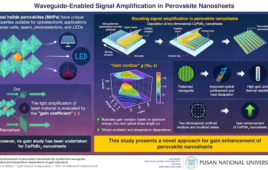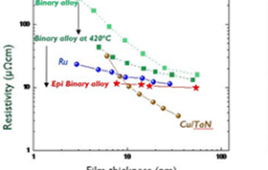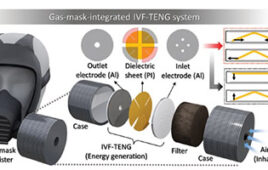 Carnegie Mellon University chemists have developed two novel methods to characterize three-dimensional macroporous hydrogels — materials that hold great promise for developing “smart” responsive materials that can be used for catalysts, chemical detectors, tissue engineering scaffolds, and absorbents for carbon capture.
Carnegie Mellon University chemists have developed two novel methods to characterize three-dimensional macroporous hydrogels — materials that hold great promise for developing “smart” responsive materials that can be used for catalysts, chemical detectors, tissue engineering scaffolds, and absorbents for carbon capture.
Researchers working in the lab of Carnegie Mellon Professor Krzysztof Matyjaszewski published their results in the May issue of Advanced Science, with the article featured on the journal’s back cover. Their findings are the latest in Matyjaszewski lab’s long history of breakthroughs in polymer science.
The 3DOM hydrogels contain a network of interconnected pores with uniform size. The configuration of these pores allows the materials to hold a large amount of liquid, and influences the material’s properties.
However, while the materials are easily made using a process called colloidal crystal templating, their nature has made it difficult for scientists to characterize the exact internal structure of the 3DOM hydrogels.
“The porous structure that makes these materials so useful is also what makes them so hard to characterize,” says Hongkun He, a doctoral student in Matyjaszewski’s lab. “The pores can hold large amounts of water, but if you remove this water to study them, the pores collapse and you can’t map them.”
He and his collaborators were able to characterize the 3DOM hydrogels using an indirect electron microscopy method. They soaked the hydrogels in a solution of a crosslinker, which created rigid inverse replicas of the initial 3DOM structures. They then used scanning electron microscopy (SEM) to image the section surfaces of the inverse replicas.
The researchers also found they were able to rehydrate the hydrogels, demonstrating the material’s shape memory properties — properties that are key to creating smart materials.
He also was able to resolve the structure of hydrated 3DOM hydrogels using nanoscale resolution X-ray microscopy (ZEISS Xradia 800 Ultra). This technique, which is noninvasive and nondestructive, allowed the researchers to visualize the hydrogels in three dimensions under ambient conditions.
“This marks the first time that we have been able to visualize the reversible porous structure within this material,” says Matyjaszewski, the J.C. Warner University Professor of Natural Sciences. “Well-defined 3DOM hydrogels provide a versatile platform for a wide variety of functional materials.”
The researchers believe that the simple and effective structural characterization methods they developed for the 3DOM hydrogels will advance research into the materials. They have been able to make further chemical modifications to the pores of the 3DOM hydrogels by grafting with organic compounds and polymers. This process will allow them to use the hydrogels as “stem gels” that can evolve into materials with programmed properties and functions, such as responsive materials, organic–inorganic composites and bioactive hydrogels for digestion or separation of bio (macro) molecules.
Additional authors include Shawn Litster, Saadyah Averick, Pratiti Mandal, Hangjun Ding, and Sipei Li of Carnegie Mellon, and Jeff Gelb, Naomi Kotwal and Arno Merkle of Carl Zeiss X-Ray Microscopy. Ding also has an appointment at the University of Science and Technology, Beijing.
This research was funded by the U.S. Department of Energy’s Office of Science.
Release Date: June 30, 2015
Source: Carnegie Mellon University




